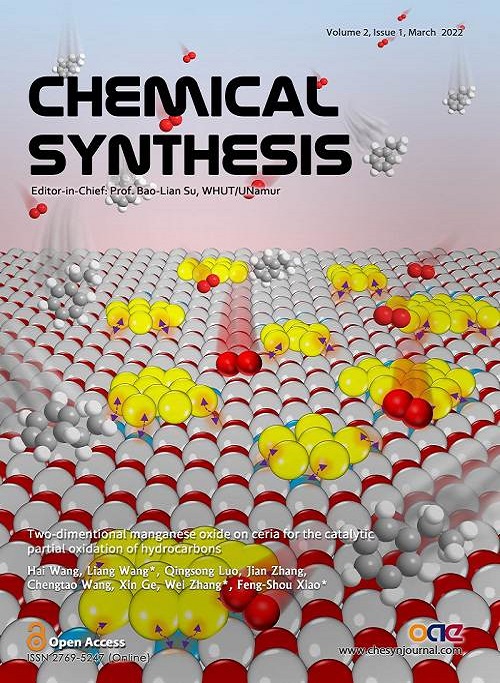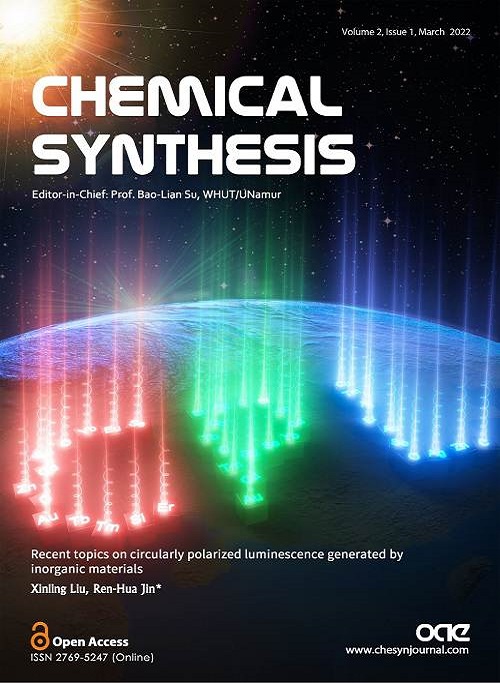Volume 2, Issue 1 (March, 2022) – 7 articles
Cover Picture: Although the rational synthesis of catalysts with strong oxide-support interactions to modulate the geometric and electronic structures and achieve unusual catalytic performance is challenging in heterogeneous catalysis, it is in significant demand for the efficient and sustainable transformation of chemicals. Here, we report the synthesis and performance of a ceria-supported two-dimensional manganese oxide catalyst with strong metal oxide-support interactions, which help to produce well-dispersed and amorphous MnOx layers on the CeO2 matrix (MnOx/CeO2). This catalyst readily reacts with molecular oxygen to give a high capacity of active oxygen species, owing to the interfacial effect. The C-H bonds are adsorbed and activated by these active interfacial oxygen species, leading to high activities and selectivities in the industrially important C-H bond activation reactions, such as the oxidation of hydrocarbons to alcohols and ketones with molecular oxygen under solvent- and initiator-free conditions at mild temperature. The performance of the MnOx/CeO2 catalyst is greater than that of noble metal and highly efficient Mn-Ce solid-solution catalysts. More importantly, the catalyst is stable and exhibits constant reactivity in continuous recycling tests. These results are important for the design of highly efficient catalysts for the selective oxidation of hydrocarbons.
view this paper
Download This Issue Viewed:
Cover Picture: Circularly polarized luminescence (CPL) is an interesting phenomenon that represents the unequal emission of left and right-handed polarized light from an emitter. CPL is promising in chirality characterization and various optical applications. Traditionally, research on CPL has been centered on organic substances. Nevertheless, in recent years, CPL based on inorganic substrates has also become a nascent topic, which is significant in exploring novel chirality- and luminescence-related properties and applications in inorganic materials. This short review summarizes the recent progress made regarding the following two aspects: 1) how to endow common inorganic luminophores with CPL activity; 2) how to use emerging chiral inorganic nanomaterials to design CPL-active systems. The general synthesis strategies, optical properties, applications and outlook of CPL-active inorganic materials are also demonstrated.
view this paper







